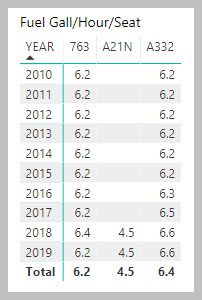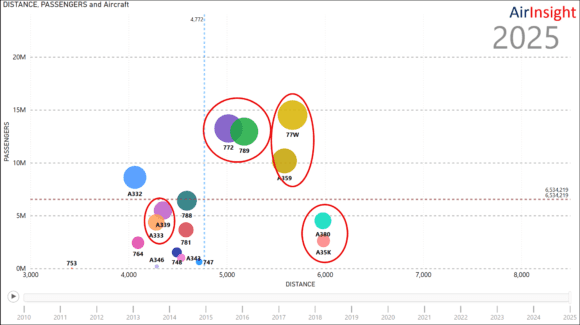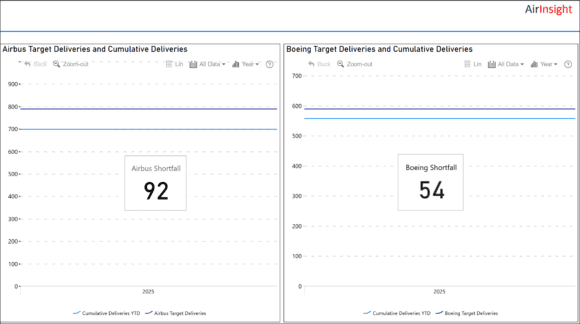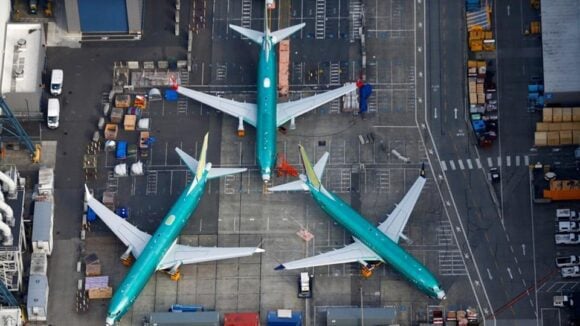
2019 07 19 11 55 18
Hawaiian Airlines is a good example of an airline that deploys “middle of the market” sized aircraft. They have a small high-frequency short-haul fleet for inter-island traffic. But island to mainland service is a good place for a middle of market size airplane.
DoT data shows that the airline’s 767s average stage length is about five hours and the A321neo is about 5.2 hours. Hawaiian’s A330-200s average 6.5-hour stages as they fly longer routes. This airline has three contenders that bracket the middle of the market segment.
It is fascinating to see the improvement the A321neo is bringing to bear for the airline. Unlike the other US airlines flying the A321neo, Hawaiian is stretching its legs. Take a look at the fuel burn per hour per seat data.
The A321neo is 27% more fuel-efficient than the A330-200 and 29% more fuel-efficient than the 767-300. Those are good numbers. It appears the decision to select the A321neo was the right one for the airline as it replaces the 767 with the A321neo.
With a competitive range and capacity, the A321neo enables the airline to reach more secondary cities because of these good economics. Since Hawaii is a leisure destination with lots of package tours, the lowest cost of seat production is vital. The A321neo achieves this.
A final point on the A321neo fuel burn. The average for all US airlines flying that aircraft is 4.9 gallons of fuel per seat/hour. Hawaiian’s routes benefit from the A321neo more than those not flying such long stages.
Views: 6





